Elements Panel
This page describes how to work with the Elements Panel.
- Elements Panel Overview
- Opening Elements Panel
- Model-Based Content
- Elements Panel Shortcuts
- Member Selection using Manual Techniques
- Member Selection Using Context Menus
- Custom Elements
- Parameters
- Temporary Disabling of Data Model Actions
- Handling of Large Element Trees
NOTE: For information on using the elements panel for measurements, see Elements Panel for Measures.
Elements Panel Overview
The Elements Panel is an interactive tree that allows users to browse the individual member elements of a selected hierarchy. Using the elements panel, users can traverse the hierarchical tree of members while navigating between parent and child elements that can be included in the underlying query.
- Select individual members from any level in the tree.
- Select a group of members located in the same level or in different levels.
- Use functions to select entire levels, descendants below a specific levels or leaf descendants at the bottom of a specific level.
- Select special items including Named Sets, Parameters and Custom Elements.
Opening Elements Panel
To view a hierarchy's element tree, use one of the following methods:
- Double click a hierarchy within the Hierarchies Panel.
- Double click a hierarchy in the any of the four zones of the Selection Panel.
- Right-click a hierarchy in the selection panel or the hierarchies panel and select the "View Elements" command.
Model-Based Content
The element tree for hierarchies includes the following items.
Default Members 
For all hierarchies in the data model (except the Measures hierarchy), the first line in the Elements Tree shows the model's default member as defined by the data model designer. If desired, you can select the "default" line and run the query.
If a hierarchy is present in the SubSet zone when you select the "Default" line, the hierarchy will be removed from the SubSet zone. This is because the SubSet zone requires that a specific element be selected by the user in the Elements Panel.
For some data models, the keyword "Default" is followed by a specific name. And for other data models, the keyword "Default" appears alone, without a name. In both cases, selecting the word "Default" line has the same effect.
WITH NAME
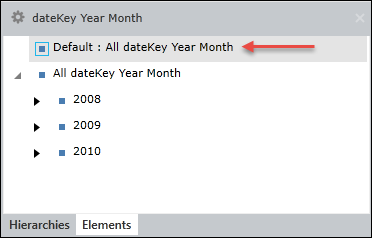
WITHOUT NAME
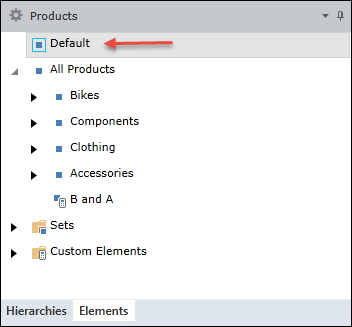
Standard Members 
Standard Members (also referred to as Natural Members) comprise a hierarchical tree of elements.
- If an arrow is present, click an element to expose its child elements.
- If no arrow is present, the element has no children.
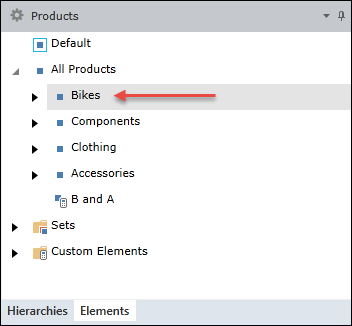
Calculated Members 
Calculated Members appear within the hierarchy but do NOT have any standard child elements.
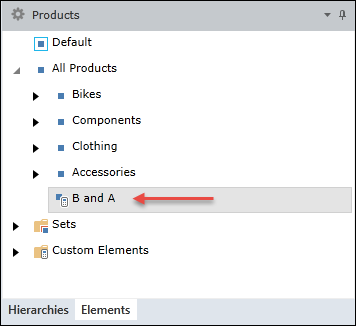
Named Sets 
Named sets are contained in a separate display folder and are designed by the data model designer.
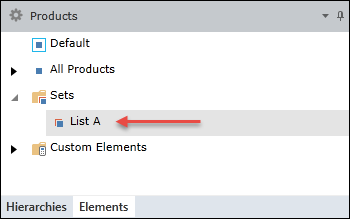
Elements Panel Shortcuts
In the top left hand corner there is a element tree shortcut button which provides access to several functions (depending on the client license type of the user).
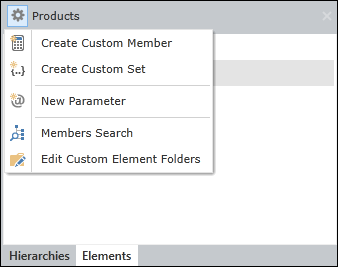
Member Selection using Manual Techniques
To manually select one or more member elements from the element tree:
- Click on the parent nodes and traverse the underlying hierarchy to find the elements you are interested in querying.
- Hold the SHIFT key down to select contiguous members.
- Hold the CTRL key down to select non-contiguous members.
Member Selection Using Context Menus
Another method for selecting members in the element tree is to use the context menus. Right click on a given member and choose one of the Descendants commands, as described below.
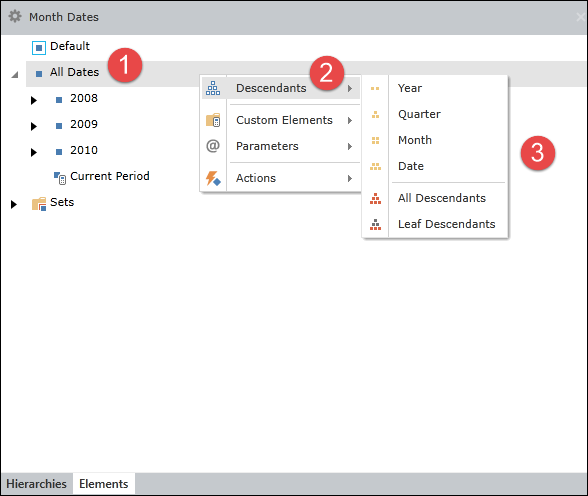
Descendants to Level 





This command specifies all descendant elements below the chosen level. For example, right-clicking "2008/Descendants/Quarter" will select all quarters beneath the year 2008.
All Descendants 
This command selects all elements below the chosen element.
Leaf Descendants 
This command selects all of the lowest level elements at the bottom of the tree for the chosen level.
Custom Elements
The Custom Elements folder contains various types of elements and calculation that can be generated by the user. To generate customer elements, right click on an item in the elements panel and select the Custom Elements command.
Member Calculations
For more details on Member Calculations, refer to the help chapter titled Calculation Designer.
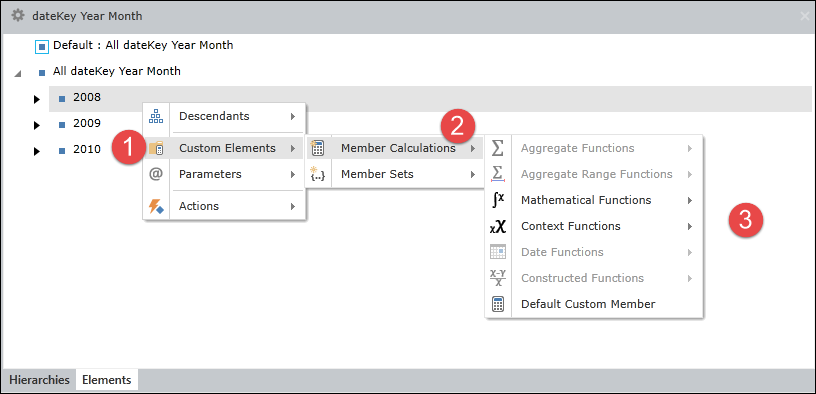
Member Sets
For more details on Member Sets, refer to the help chapters:
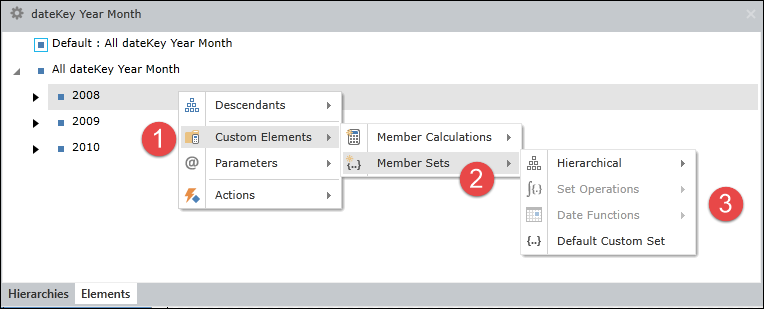
Parameters 
Users can create parameters that can be used as normal elements in the query. Parameters are contained in a separate display folder named "Parameters". Parameters are report specific and are designed by the user.
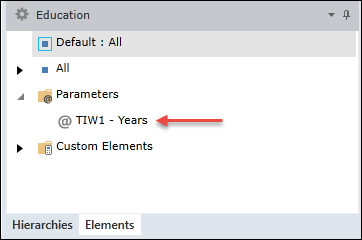
Temporary Disabling of Data Model Actions
Right click on any item in the elements panel and select the Actions command to expose any predefined data model actions.
There are several DISABLING FACTORS which cause data model actions to be temporarily disabled. When the DISABLING FACTORS are removed, the actions return to normal.
Several DISABLING FACTORS are listed below (there may be others):
- Selecting multiple slices for grid cells that have a predefined data model action.
- Using custom elements on grid cells that have a predefined data model action.
Handling of Large Element Trees
Opening extremely large element trees can dramatically reduce the performance of the client. Where possible, users are encouraged to traverse the larger hierarchies sparingly.
Home |
Table of Contents |
Index |
User Community
Pyramid Analytics © 2011-2022

